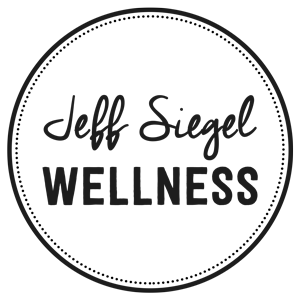I was flying down to Norfolk, VA last weekend to visit my girlfriend’s family for the holidays. It was a great day for flying: beautiful, clear skies and nothing to do but admire the Earth from above.
I snapped this photo as we were traveling over the northeastern Chesapeake Bay. I kept wondering why the rivers, streams and watersheds winded so gracefully across the land, switching back and forth in beautiful “S” curves, when a direct shot to the bay clearly would have been the most direct path. Obviously, I had it all wrong. Rivers are nothing like humans. They do not follow our preference for linearity. Directness is not in their lexicon. There is no sense of urgency. No hurry to get anywhere. The one rule is to keep flowing: smooth and steady.
It dawned on me that we are so inured to the idea of linearity—linear progress, linear buildings, linear time—that we often fail to see curvy, fractal nature of the universe. We impose our straight-line thinking on top of systems that move in cycles and spirals. We have even devised advanced mathematics (calculus) to find the straight-line derivatives of vacillating and cyclical systems.
Who can blame us? Our minds like certainty, security and patterns. Straight lines are easy to predict and control. Who doesn’t like to feel in control?
Moreover, we piece together fragments experiences and memories into personal narratives that appear to move linearly from birth to death. In many ways, this tendency for linear thinking is very ingrained in the human experience.
Furthermore, we are steeped in a culture that prizes efficiency, directness and constant forward progress. We like direct flights, express trains and anything that gets us to our destinations in the shortest time possible.
This linear thinking is always more apparent around New Years when the focus is on setting resolutions for the year to come. Yet we all know that New Year’s resolutions are usually futile and ineffective. There are many reasons for this: inadequate clarity of what we want, lack of specific time-frames for getting things done, a failure to build systems that support achieving our goals. Despite these important psychological and environmental roadblocks, the one thing that most people overlook is not what we need to achieve, but what we need to let go of. Specifically, letting go of the idea that progress, or life in general, moves in a predictable straight line from inception to completion.
This is far from a new insight. We all acknowledge sayings like “Life is a rocky road. You must take the highs with the lows,” and “It’s not about the destination; it’s about the journey.” But how often do we cling to the notion that if we’re not moving directly from A to B, we must be doing something wrong? Or at least we could be doing something better.
If there’s one thing my year at Harvard Graduate School of Education taught me, it is that progress is never linear. Studies of microdevelopment have shown that learning is a dynamic process of building up new understanding, only to have our new skills shattered apart. The key is that after this undoing comes another burst of rebuilding, this time upon a slightly sturdier foundation and reaching slightly greater degrees of complexity. Therefore, moving from where we are at to where we want to be is a cycle of building up and breaking down, progressing and regressing, and learning and unlearning.
Although we’re taught to believe that hard work and practice will get you to where you want to be, we leave out the tremendous variability in the process. We don’t like talking about dips and failure because they’re not fun. But they are essential. No goal can be achieved without them.
So as we consider our aims for 2014, let us also remember that our progress will be windy. We will take two steps forward and one step back. And guess what? This is not only OK, it’s the way nature is organized because development doesn’t follow a straight line. Forward and back are all relative to a linear model. We must let them go and embrace the twisting path to our final destination.
I know this flies in the face of a lot motivational advice that says we must not get swept up in the currents of life and follow the path of least resistance. I’m thinking about motivational slogans that tell us we must push through obstacles and overcome adversity. I myself have even said that inertia is our own worst enemy.
However, I think expecting beeline progress towards our goals is different from letting life push you around. Letting obstacles dictate our path is assuming a life of default. Yet it’s possible to design our lives around clear goals and aspirations without expecting our journey to be straightforward and direct. We can overcome obstacles and adversity by taking the less direct scenic route without losing our autonomy to power and to shape our experience.
What I’m asking of all of us is to acknowledge the curves and spirals on our journey. These are our best teachers and often the greatest gifts. For if every river made a straight line to sea, imagine all the Earth that would be barren and dry.
I find this the most beautiful part: all the river’s curves allow the water to nourish so much more land and life than would ever be possible if it moved in straight line. So ask yourself, is your life more like a meandering river or a manmade canal?
Both might be necessary at different points along the journey. There are times when you need to forge ahead with your own business. But always consider how others are being affected along the way. Would a mellower and perhaps slower path create opportunities for service and nourishment that a straight line would not?
As we flip to a new calendar page, go ahead; make your New Year’s Resolutions. Plan your ideal year. Design your strategies, set-up accountability and make wholehearted commitments to achieving your goals. Yet never forget that setbacks are only a product of linear thinking. If you can embrace the non-linear nature of development, then when the twists come (and they will) you’ll be reassured that you’re just flowing like Mother Nature intended.
Finally, and perhaps most importantly, consider how the twists and turns in your journey give you new opportunities to touch people’s lives along the way. At the end of the day, if you have more turns in your river, you not only get to see more, but there are more opportunities to impact others whom you might have otherwise overlooked. Straight lines may be quick. But they miss a lot along the way.
Cheers to the meandering path
I’m Jeff Siegel, a wellness coach and mindfulness teacher, helping people upgrade their habits and improve their health. For free bi-monthly wisdom on how to eat, move, and be healthier, sign-up for my newsletter. If you’d like to explore working together, you can schedule a private 30-min consultation call with me.


